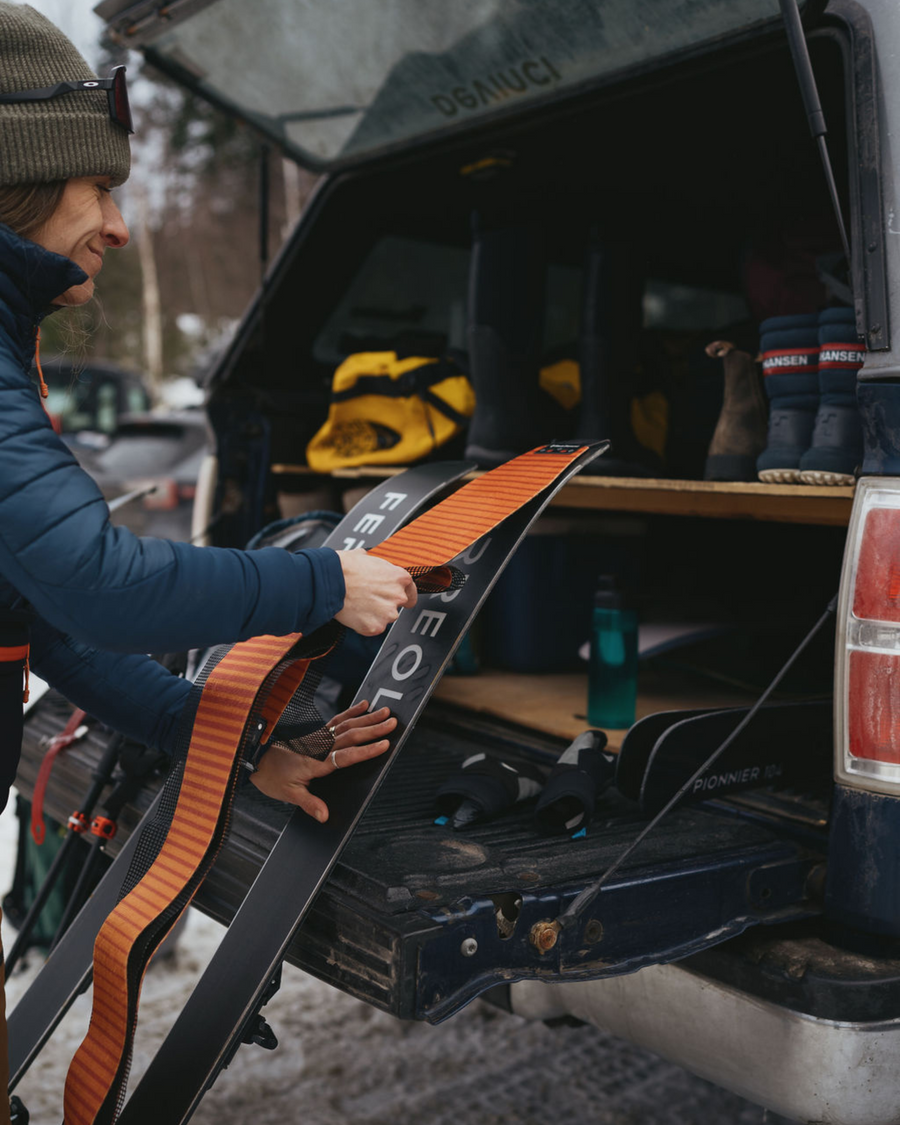Stiffness distributions

When it's time to change your old skis for a new pair, it's a challenge to choose the right model. Of course, you can go to a demo day to try out different models, but not everyone has the time and not all models will be there. To make our choice, we often have to rely on the information provided by the different manufacturers. However, each one has its own way of presenting its skis, so it is not easy to find your way around.
At Ferreol, we have made available the stiffness distributions of our skis. A numerical and objective way to inform you about this mysterious but very important property of skis: stiffness.
More transparency, more information, but also more questions. What is the stiffness distribution of a ski?
In this blog, you will understand what is the stiffness distribution, how it is measured and what it is used for. You will see that this objective measure can tell you much more about our skis than a subjective measure like the famous 1 to 10 scale that we can see on other ski manufacturers' websites. By giving an objective measure of stiffness, it is possible to compare any ski on this point!
What is the stiffness distribution of a ski?
The stiffness distribution is the graph of the bending or torsion stiffness at any point on a ski. Here are some definitions to make it clearer:
The flexural stiffness
How hard is it to bending a ski
Symbol: EI, measured in Nm²
Flexion of a ski (Source: Sooth Ski)
Torsional stiffness
How hard it is to twist a ski
Symbol: GJ, measured in Nm²
Torsion of a ski (Source: Sooth Ski)
Deformation
The shape of a ski when a load is applied (force or torque). It's a measure of how much the ski goes bananas.
Distribution
Variation of Y (in this case, the stiffness) according to the position X (distance from the center of the ski)
Why are we interested in the stiffness distribution ?
The stiffness of a ski will greatly affect its behavior on snow. Indeed, the more a ski is rigid in flexion, the more stable it will be at high speed. The torsional stiffness is also important. The more rigid a ski is in torsion, the better the edge hold. However, a softer ski will be easier to skid and easier to turn. For this reason, the rigidity of skis will vary depending on the use we will make of them.
In addition, the behavior of the ski can also vary according to the local stiffness of the ski. Let's imagine 2 skis with equal average stiffness in flexion. If we only consider the average stiffness, we could think that the skis would have the same behavior on snow in terms of flexion stiffness. However, one ski could be softer in the back and the other in the front. They will not necessarily have the same behavior. This is why the stiffness distribution is important and it is not necessarily enough to look at the average stiffness.
How is the stiffness distribution measured?
To measure the distribution of stiffness in flexion of a ski, we apply a known force to the ski and we measure the deformation of the ski at any point.To measure the torsional stiffness distribution of a ski, a known torque is applied to the ski and the torsional deformation angle of the ski is measured at any point. A research group from the University of Sherbrooke supervised by Alexis Lussier-Desbiens has developed a machine that can measure these 2 parameters as well as the geometry and the camber of the ski in less than 2 minutes. Now operated by Sooth Skithis technology is the one that Ferreol uses to measure the mechanical properties of its skis.
Case study: The Explo 96
Our design process allows us to reduce the number of prototypes necessary to arrive at the final concept. After drawing the geometry of a new prototype and making a first scale model, we choose the different materials and their configuration to obtain the desired flexural and torsional stiffness. Finally, we build a first prototype in our Beaupré facility to test it on the slopes of Mont-Sainte-Anne. Snow testing is the last step in the design cycle. It is at this stage that we must put aside the engineering and rely on the experience and evaluation of our testers. If the ski behaves as expected, the design is complete. If not, adjustments will be necessary.
In the case of the Explo 96, our testers indicated that the ski was agile and easy to control, but that it would benefit from being more spirited and stable in bumps or variable terrain. So our designers decided to increase the front end stiffness (tip) of the ski to address this issue.
The figure below shows the stiffness distributions of an early prototype of the Explo 96 (orange) and the final version (blue).

By increasing the front stiffness (tip) allows the skier to have a more aggressive stance (more weight forward) and increases the stability of the ski in bumps and variable terrain. However, by keeping a lower stiffness at the back (tail), weallows the skier to exit the turn at any time and initiate a skillful skid to quickly control speed and direction.
The result? A spirited and agile ski that will perform just as well in tight glades as it will on firm snow.
In short, if our designers had only looked at the average stiffness, it would have been impossible to do this analysis and optimize the behavior of the Explo 96. This is why measuring stiffness distributions is an important tool in our design process.


